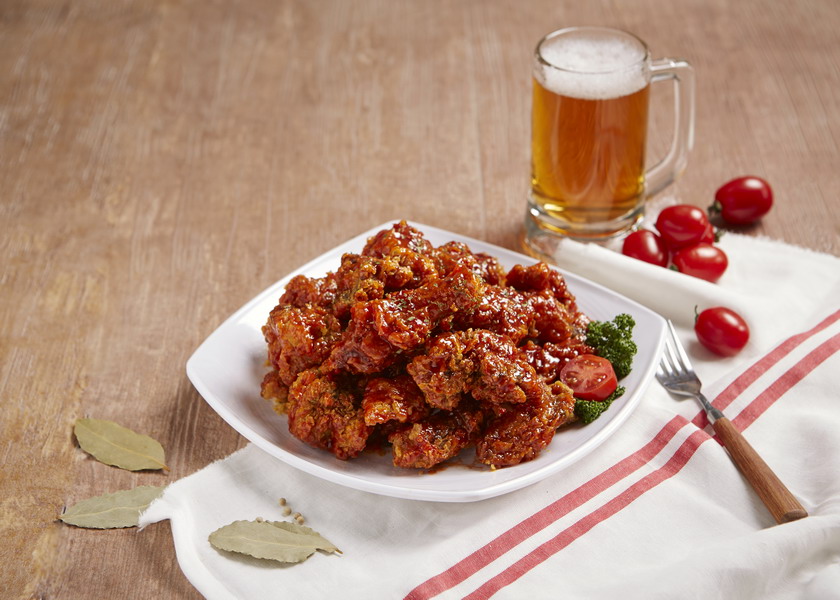A Smack of Chimaek (The Ultimate Beer-and-Chicken Combination, Part 1)

Written by Cho Namhee
Believe it or not, according to statistics from the Fair Trade Commission of Korea and a recent study on the fried chicken restaurants of Korea by KB Financial Holdings Management Institute (collected and studied in 2013), there are approximately 36,000 fried chicken restaurants registered in Korea, which is a thousand restaurants more than the number of McDonalds around the globe! The numbers are incredible. Needless to say, we take the combination of beer and chicken for granted. Consuming them together has become a social meme, even though Korea is not the original birthplace of either beer or fried chicken.
This chicken craze can be explained by a series of newly coined words in Korean such as 치덕후 (chideokhu, “chicken maniac”), 치킨공화국 (chikin gonghwaguk, “the Republic of Chicken”), and 치느님 (Chineunim, a blending of “chicken” and 하느님 [Haneunim, “Lord”]). These terms are often used and understood by the young generation; however, the fact that fried chicken is the typical yasik (late-night snack, often along with drinks) is understood in general among the people of Korea. So, how did such a dish, or more accurately, this snack, come to be regarded as a divine delicacy?
Deep-fried whole chicken appears in Korean literature written in the late 19th century, but the recipe includes sesame oil instead of modern cooking oil. Ever since the 1970s, when vegetable oil began to be used widely among the public, deep-fried whole chicken, or tongdak, has slowly built up its reputation from the local markets where vendors fry whole chickens in large iron cauldrons. This style of cooking is now called yennal-tongdak, (old-style chicken), which is now sold as a retro food found in traditional markets, and yangdong-tongdak, (named after Yang-dong Market) would be the closest equivalent you would find in Gwangju.
This style of cooking evolved and the chicken industry grew rapidly. More chicken-specializing food chains were introduced. In the late 1990s, when the nation faced a devastating financial crisis, the common notion surrounding chicken eateries was that it did not require special skills or an excessive amount of initial capital to start up a fried chicken business, which gave people who had lost their jobs an option when very few were available. Quite expectedly, the numbers of franchise chains grew exponentially, and more varieties of chicken dishes were introduced.
The majority of chicken eateries started off as bars, or “hofs,” in Korea. The Korean expression “hof,” of German derivation, refers to a bar that typically sells beer. The term is no longer widely used since all fried chicken restaurants now serve beer with chicken. From the1980s, it became common for hofs to serve fried chicken and for fried chicken restaurants to sell alcohol, and as a consequence, they fused into one: the fried chicken restaurant.
In next month’s issue, we will examine in more depth fried chicken franchises and their various recipes, as well as the introduction of Korean draft beer and how the two have come together to form such a winning combination. Stay tuned.







